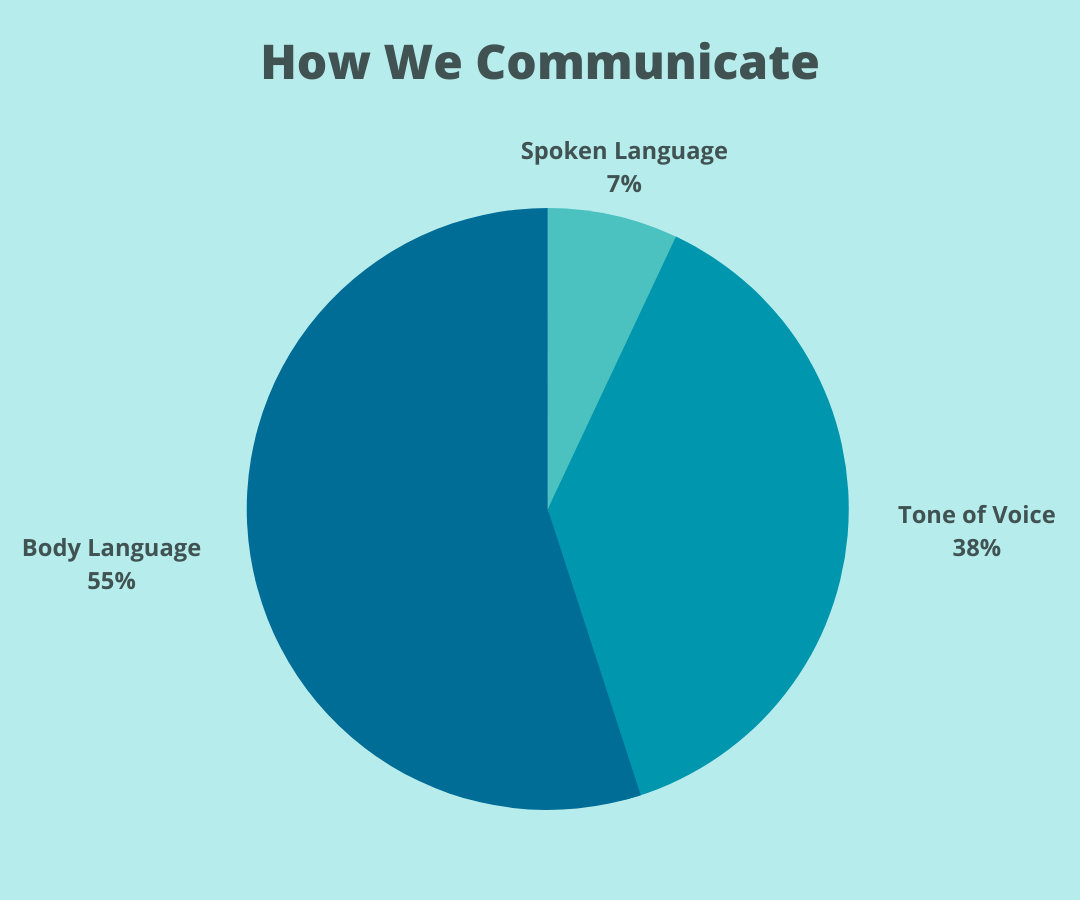Creating a consistent customer service voice can be tricky – especially given the vast array of personalities and communication styles your agents may have.
Each agent brings their unique background and experience to the table. This mixed bag of personalities means that customer interactions can vary wildly.
However, a well-defined customer service voice can create consistency and harmonize the differences between your support agents.
Now that’s not to say you want to define a voice that limits your agent’s ability to react appropriately to a range of situations.
Instead, you should create a voice style guide that empowers agents to deliver customer experiences that align with your brand identity and boost customer satisfaction.
In this post, we’ll look at the best ways you can build a consistent tone and deliver experiences that get your customers raving about you.
What is a Customer Service Voice?
Lots of companies have a strong brand voice, yet their customer service interactions are unbearably generic.
Sure, I get it. Formality is often appreciated in customer support situations. Yes, it sounds ‘professional,’ but it also often sounds cold and impersonal.
Your customer service voice is the words you use to communicate your values and brand personality to customers through support channels.

Your industry heavily influences the style of voice you use. For example, in the banking and finance industries, customers appreciate a more professional tone.
At the same time, in the D2C eCommerce industry, it’s more common to encounter a more playful and friendly tone.
Variations from these industry norms can cause problems. For example, I remember once I had a scammer obtain my credit card details and make several fraudulent charges.
When I contacted the bank in a fluster to dispute the transaction via live chat, I was met with a litany of emojis from the agent. Needless to say, it didn’t inspire much confidence or put my frayed nerves at ease.
When customers contact you, they want a consistent interaction across every channel and department.
If you’re promoting your brand as laid back, but your customer service is suffocatingly formal, you’re creating an inconsistent brand experience that leaves customers conflicted.
The easiest way to start creating a consistent customer service voice is to imagine that your brand is a human being. Your underlying voice will always be the same when you do this, but your tone can adapt appropriately from situation to situation.
Why Does Your Customer Service Voice Matter?
The language you use to speak to customers is arguably the most important way of showing people what your brand stands for.
And it’s not just marketing – every customer interaction is a chance to influence their perception about who your company is.
Seriously, every chat, call, email, SMS, and word is a chance to brighten a customer’s day and move them close to your brand.
On the flip side, if the way your customer service team communicates frustrates or confuses customers, the hard-earned loyalty and trust you’ve built can evaporate in the blink of an eye.
Your customer service voice is especially important when customers come to you with a problem. Unfortunately, in such scenarios, it’s easy for tempers to flare.

Lots of businesses don’t place much value on their customer service tone of voice. However, in the digital age we inhabit, it matters more than most folks think.
To illustrate, consider the 7-38-55 theory of communication created by UCLA professor Albert Mehrabian. This theory dictates that human communication consists of:
- 7% spoken language
- 38% tone of voice
- 55% body language

With body language taken out of the equation, tone of voice becomes the predominant player in conveying meaning.
Thus, creating a consistent and relatable customer support voice is the key to mastering communication with customers via digital channels.
What is a Customer Voice Style Guide
Creating a customer voice style guide is the easiest way to get everyone on your support team on the same page.
Having a voice style guide also gives agents the confidence to know they’re communicating with customers in the right way.

You can refer to your customer voice style guide when planning customer support communications like:
- Canned responses & customer phrases: Canned responses can save agents buckets of time – but they don’t need to be generic. When writing customer service phrases, use your style guide to craft responses that stay true to your brand’s tone.
- Chatbots: Chatbots are an excellent way to give customers speedy answers while also reducing the burden on your team. Program your chatbot’s responses in a way that authentically resonates with your brand.
- FAQs & knowledge base: FAQ pages are essential to help customers get the answers they need. Use your style guide to write an FAQ page or craft knowledge base articles that align with your brand identity.
In most companies, it’s not uncommon for multiple authors to contribute to the creation of these essential customer support assets.
And while this is often necessary from a workload perspective, if all authors write in line with your customer support guide, you’ll minimize inconsistencies in phrasing, stay true to your brand, and deliver the most consistent experience possible.
How to Build a Customer Service Voice Style Guide for Agents
When it comes to creating a customer voice style guide, there’re many ways to skin a cat. However, here’s a relatively simple approach that’ll help you build a functional style guide.
1. Study Your Marketing Material
Your marketing material is where customers form their perception of your business. Thus, starting from your marketing material allows you to craft a support voice that fits your customer’s impression of your brand.
So, gather up your marketing materials such as emails, blog content, e-books, website content, ad creatives, and so on.
Comb through these assets and look for specific phrases or constructions that repeat across your marketing material.
If you have a marketing department, chat to them about what their core voice is – the copywriters should be of particular use here.
Of course, you don’t need to pack your support voice style guide with every last phrase that the marketing department uses.
Some of the language used by your marketing department mightn’t always be appropriate in a customer support setting, so don’t be afraid to edit liberally.
2. Speak Your Audience’s Language
High-performance sports coaches often lose the ability to teach novice athletes how to perform basic skills.
This is because when you’re an expert and experts surround you, your perception of how much stuff regular folks understand becomes skewed. You assume basic knowledge is a given.
Your support team may fall victim to this phenomenon, too – so you need to be careful. For example, terms like ‘order fulfillment,’ ‘logistical processes,’ and ‘card authorization’ might sound like gibberish to everyday customers.

Of course, you can’t get around the fact that some support terms like ‘returns’ and ‘refunds’ have nuanced meanings. Occasionally, you’ll need to use technical terminology – but you should always be precise and help folks who don’t understand wherever possible.
3. Define A Guiding Voice
Your agents likely come from different backgrounds, so without a style guide, they’ll just continue to communicate in their own tones.
To smooth out the discrepancies between people, write a high-level customer voice statement. For example, check out Shopify’s overall voice statement and guidelines:

“Simply put, we’re a company built by real people who understand this business and care about helping others succeed.”
One helpful strategy to help you dial in your tone is to use a ‘we are this, not that’ approach. For example, see the way they say:
- Be real, but not too tough or overly familiar.
- Be proactive but not needy or pushy.
- Guide, but don’t handhold or prescribe
Your guiding voice should derive from your overall customer service philosophy. It should align with your highest aspirational values for customer service.
4. Know Your Register
In certain cultures, like Germany, for example, it’s culturally expected that customer support will be more formal and reserved than in other countries.
Using a customer’s first name or throwing slang into the interaction may be perceived as being unprofessional and discourteous.
When writing your customer service voice manual, ensure you consider the different cultural sensitivities that may exist amongst your customer base and adjust accordingly.
5. Outline Common Customer Service Phrasings
Customer service phrases are fantastic for helping your agents see your customer service voice in action.
Plus, if you write phrases for common customer support scenarios, your agents will know exactly how to respond in the heat of the moment.
To return to Shopify’s customer voice guidelines, they outline how agents should respond in various scenarios ranging from simple errors to full-blown meltdowns.

It’s also important to outline the phrases that agents shouldn’t respond with to avoid any mishaps.
Which phrases you’ll use obviously depends on your business and what you’re selling. But if you’re stuck, check out the comprehensive list of customer service phrases for every situation we compiled previously.
6. Don’t Forget Hedging Words
Hedging words are the words we write and say in order to soften our words, to make them less direct.
Now, don’t take this the wrong way – the last thing you want to be with your customers is vague or lacking in confidence when you speak.
But hedging words can help tone down overly harsh phrasings. For example, let’s say a customer contacts your support and wants to return an item.
Instead of responding with “Give me your order number,” use a hedged phrase like “Could you give me your order number, please?”
See how that phrase comes across as more pleasant? Wherever you have a phrase that sounds like an order, add hedging words to tone it down a bit.
7. Remember It’s Not Set of Rules
While highlighting specific examples and phrases is a good idea, it’s important to realize that your tone of voice isn’t a box-ticking exercise.
Ultimately, developing a helpful tone of voice is about nurturing empathy in customer interactions. You need to carefully consider the people you’re communicating with, how they feel and what they need from you.
So, if the moment arises when agents need to deviate from your voice style guide, they should be able to do so with confidence. After all, it is just a guide.
The last thing you want is for customers to think your support is some kind of army of soulless drones following a script. Instead, they need to know that you’re a business that cares about them.
Obviously, underpinning this idea is the need to hire the best customer service talent possible. No voice and tone guide will compensate for sub-par workers.
But when you’ve got a team of intelligent, thoughtful, and empathetic agents, giving them a little bit of wiggle room to trust their own intuition will deliver a more natural and memorable experience for customers.
8. To Emoji or Not to Emoji?
Emojis can be a powerful way to communicate the tone of voice in written language – especially in live chat interactions or email.
But you’ve got to carefully consider how your customers perceive emojis. I’m sure even among your own social circle, that emoji can be interpreted in vastly different ways.
Moreover, emoji don’t always render the same way across different devices and operating systems.
As a rule of thumb, you should use emojis to add context – not to replace words. This way, they’ll add extra meaning and personality without confusing your customers.
9. Aim For Transparency Above All Else
Millennials and younger generations have grown up in a digital world and can smell B.S. from a mile off. So, it’s imperative that your customer service voice is transparent and authentic.
First up, you want to ensure your customer service voice doesn’t use too much passive voice. The passive voice stinks because it abdicates responsibility.
For example, consider how this sounds “A decision has been made to cancel your order.”
Okay, now compare it with this: “We’ve canceled your order.”
Both sentences communicate the same thing, but the second one feels a lot more personal – you’re taking responsibility for your actions as a business.
Here are more examples:
- Your order has been shipped -> We shipped your order
- Your refund will be processed -> I’ll process your refund
- Used items will not be accepted -> We can’t accept used items
Using the passive voice feels like you’re distancing yourself from the issue at hand – which isn’t fair on the customer.
Next up, good formatting in written communications also boosts your transparency factor. Avoid walls of text at all costs. Instead, use plenty of :
- Sub-headings
- Bullet points
- Sentences with no more than 11 words
- Images/graphs
Laying things out as clearly as possible, in your customer’s own language, will communicate the perception that you’re a trustworthy and reliable business.
If you’re struggling to write in a way that sounds natural, just pretend you’re speaking out loud and put that down on paper. That way, you’ll always avoid sounding like an impersonal, stuffy corporate-speaking brand.
Develop a Better Customer Service Voice Today
Having a consistent customer service voice that aligns with your brand is one of the most important things you can do for your brand.
Hopefully, the advice and examples in this article have made creating a fitting customer service voice easier.
Putting marketing communications aside, the way customers interact with your support has a monumental impact on the likelihood that they’ll stick around.
Remember, every word your support team writes or utters can either move customers closer to your brand or push them away.
So get out there and start building a voice that resonates with your customers and solidifies your reputation as an excellent brand that puts customers first.
Now over to you! Do you have a customer service voice for your brand? Maybe you know of a brand that has an extraordinary voice? Let us know in the comments below!




